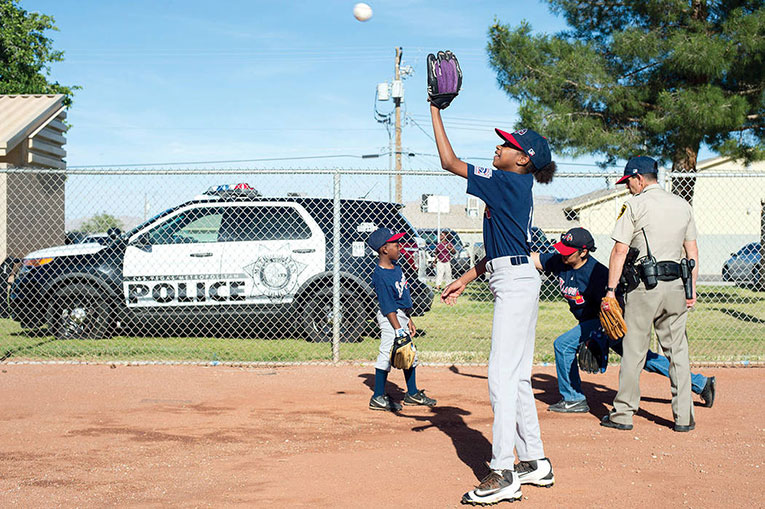
Before the embers had cooled from the riots and fire that roiled Las Vegas’ Historic Westside 25 years ago after the Rodney King verdicts, the Metropolitan Police Department was forced to confront its failure to build relationships with residents of the city’s predominantly black community.
Flash forward 25 years, and the difference in the department’s approach in the demographically shifting district is striking:
The community policing team of the Bolden Area Command station, whose patrol area includes the Westside, often work 12-hour days hosting holiday events, food banks and other events and partnering with the area’s faith and business leaders.
Bolden Area Command’s Capt. Robert Plummer was a 23-year-old patrol cop assigned to the Westside in the early ‘90s, a time when the community was facing a violent crime wave caused by an influx of gang members from Southern California – Bloods and Crips – and a crack epidemic.
Plummer said the relationship between the police and the local community was not great. Community outreach was often an afterthought, and many officers did not bring empathy to the job. More often, they came with battering rams.
The strained relationship between cops and community was evident when two small police stations near the Gerson Park and Carey Arms housing projects burned during the riots. The department did not rebuild them.
“That was a mistake,” Plummer said. “We should have gone right back in there.”
Elgin Simpson was there when the riots broke out and played a key role in organizing community leaders afterward. Simpson, who was born in the Westside in 1945, said the riots changed the dynamic between the community and law enforcement.
The group he helped start, Community Peace, did outreach in troubled neighborhoods and often acted as a go-between with police.
“It made a difference in how things were perceived,” he said. “All you saw on the news was how the gangs were doing all of this stuff, that they … wanted to burn down the Strip and downtown and all that other stuff.”

